Ammonia Gas Detector GT-2511-FLP - Ambetronics
Ammonia, a colorless gas with a pungent odor, is widely used in various industries, from agriculture to refrigeration. While it serves essential purposes, its presence in the air can pose significant risks to human health and safety. Here’s a comprehensive exploration of the Ammonia Gas Detector, a vital tool in managing and mitigating these risks.
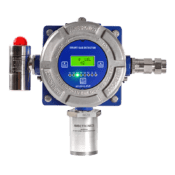
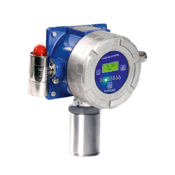
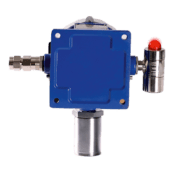
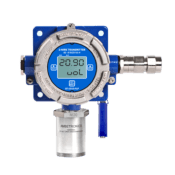
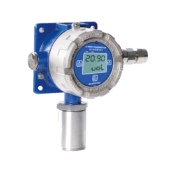
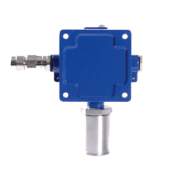
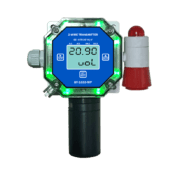
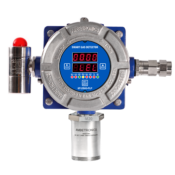
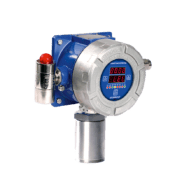
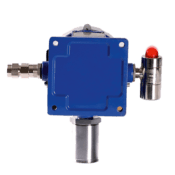
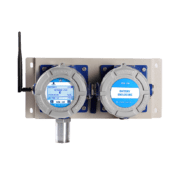
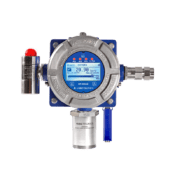
Advanced Ammonia Gas Detection Technology
Multi-Gas Detection
Our Ammonia Gas Detector is designed to provide a swift and reliable output, detecting the smallest leaks of Ammonia Gas as well as Oxygen, Toxic, Combustible, and Volatile Organic Compounds (VOC)
Smart Sensor Module
Incorporating a pluggable gas sensor module for Ammonia Gas, Oxygen, Toxic, Combustible, PID, and NDIR sensors, offering versatility in detection.
Data Management
Calibration data, alarm data, offset data, and output current data are stored in the sensor module, facilitating easy maintenance and servicing.
Resistance and Sensitivity
Highly resistant to poisoning and etching, capable of detecting gasses down to PPM, %V/V, %LEL, and mg/m3.
Product Overview:
Certifications and Compliance





The Ammonia Gas Detector holds multiple certifications, ensuring compliance with the highest safety standards:
Flameproof Enclosure: Ex db IIC T6 Gb IP 66 certified by CIMFR and PESO.
Smart Gas Detector/Transmitter: Ex db IIC T6 Gb Ex tb/tc IIIC T85°C Db/Dc IP68 certified.
Intrinsically Safe Certified: Ex d [ia] IIC T6 Ga Ex tb IIIC T85°C Db IP68, meeting CIMFR and PESO standards.
Intuitive Display and Indications
LED Display: Equipped with a 2-line, 4-digit 8 mm (H) Seven Segment LED display for clear visibility.
Status Indicators: 8 LEDs indicate the status of the instrument, providing real-time insights into sensor conditions.
Comprehensive Indications: Alerts for 'Sensor Open,' 'Over Range,' 'Sensor Replace,' 'Cal Due,' 'Cal Fail,' and 'mA Loop Open' ensure comprehensive monitoring.
Communication and Programming
Communication Protocols: Standard 4-20mA signal output with configurable range, optional RS-485 Communication Port with MODBUS RTU PROTOCOL.
User-Friendly Programming: Non-intrusive programming for the Flameproof Model using a magnetic wand, with password protection and change facility.
Alarm Acknowledgement: Facility for alarm acknowledgement from both front and rear terminals, enhancing operational control.
Error Monitoring and Safety Features
Test Mode: Provided for checking the electronics, including Alarm LEDs, relays, and output current/voltage, with or without a sensor module.
Optional Alarm Relays: On-board with two configurable alarm levels and one fail-safe relay for enhanced safety.
Interested in our Ammonia gas detector system?
Applications: Adaptable to Diverse Industries
From refrigeration and chemical manufacturing to food processing, the Ammonia Gas Detector finds applications across a spectrum of industries, ensuring safety in various environments.
Error Monitoring: Ensuring Operational Integrity
The Ammonia Gas Detector incorporates robust error monitoring features:
1. Sensor Break/Open: Display shows 'SENSOR OPEN,' with corresponding output current/voltage indications.
2. Over Range: Display indicates 'OVER RANGE' during over-range scenarios.
3. mA Loop Open: Indicates "mA LOOP OPEN" during output current open conditions, disappearing after acknowledgment.
4. User-Selectable Settings: Upscale and downscale current settings, inhibit mode adjustment, and user-selectable options for different gases.
Sensor Technology and Detection Method
Sensor Technology: Electrochemical, Catalytic, Pellistor, NDIR, PID, Solid State.
Detection Method: Diffusion.
Gas Detected and Range/Resolution
Gas Detected: Various gases as specified in the table.
Range & Resolution: Specified range and resolution for different gases.
Control Action and Output Signal
Control Action: Two independent alarm set points with latch and non-latch facility, user-selectable hysteresis, and logic options.
Output Signal: Standard 4-20mA output with configurable range, optional relay outputs, and communication ports.
Accuracy and Performance
Calibration Accuracy: Varied accuracies for different sensor technologies.
Performance: Response time less than 15 seconds, depending on the type of gas.
Electrical and Environmental Considerations
Supply Voltage: 18 to 36 VDC, typically 24VDC.
Power Consumption: Less than 3.6 Watts, ensuring energy efficiency.
Operating Conditions: Operating temperature from -15 to +55°C, storage temperature from -10 to 60°C, and humidity less than 95% non-condensing.
Accessories and Common Deliverables: Enhancing Functionality
Optional accessories include CE certified power supplies, canopies, mounting stands, gas calibration kits, hooter cum flashers, and various communication converters. Common deliverables encompass test calibration certificates, reference calibration gas certificates, operational/instrument user manuals, and standard mounting hardware.
FAQs
How often should I calibrate the Ammonia Gas Detector?
Calibration frequency depends on usage and environmental conditions. It is recommended to calibrate annually, but more frequent calibrations may be necessary in harsh or high-risk environments.
Can the detector be used in explosive atmospheres?
Yes, the Ammonia Gas Detector is certified for use in explosive atmospheres, holding certifications such as Ex db IIC T6 Gb and Ex tb IIIC T85°C Db/Dc IP68.
Are there specific maintenance requirements for the sensor module?
The sensor module is designed for easy maintenance. Calibration, alarm, offset, and output current data are saved within the module, simplifying servicing. Regular checks are advisable for optimal performance.
How does the detector handle extreme temperature conditions?
The Ammonia Gas Detector is designed to operate in a broad temperature range from -15 to +55°C. For specific applications, the model can be customized to handle temperatures as low as -20°C.
Is the detector suitable for use in confined spaces?
Yes, the Ammonia Gas Detector is suitable for confined spaces, holding certifications such as Ex d [ia] IIC T6 Ga Ex tb IIIC T85°C Db IP68.

